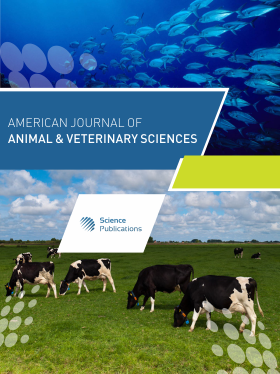A Comparative Study on the Reproductive Performance of South African Indigenous Sheep Breeds Following Oestrus Synchronization
- 1 Tshwane University of Technology, South Africa
- 2 Directorate: Farm Animal Genetic Resource, South Africa
- 3 Conservation, Reproductive and Biotechnologies, South Africa
Abstract
The aim of the study was to compare the effect of age and live body weight on the oestrus response, duration, pregnancy rate and lambing rate among South African indigenous sheep breeds (Zulu sheep = 36, Bapedi sheep = 26, Damara sheep = 10 and Namaqua Afrikaner sheep = 9). Control Intravaginal Drug Release Dispensers (CIDR’s) were inserted into the vagina for 10 days. The twitching of tail and standing to be mounted in the presence of the teaser ram were most targeted signs of oestrus. Data were subjected to an appropriate analysis of variance (ANOVA). The scores were subjected to 1:1 Frequency table and a Chi-Square (χ²) test for the equal proportions test. One Bapedi ewe loss CIDR before removal date hence was removed from the experimental animals. All Namaqua Afrikaner (100%) ewes responded to the synchronization protocol with the longest oestrus duration (70.7±7.2 h). However, Namaqua Afrikaner sheep scored the lowest rate for conception (44%) and lambing (44%). No significant different (P>0.05) observed for the onset of oestrus among the breeds. Four years old ewes responded better to oestrus synchronization than ≤3, 5 and ≥6 years. Nevertheless, ewes that were ≥6 years old had higher conception rate (94%) and lambing rate (84%). Zulu sheep had higher (89%) lambing rate than Damara (60%) sheep and Namaqua Afrikaner (44%) sheep. Lighter ewes had higher conception (83%) and lambing rate (90%) than heavier (77 and 64%) and moderate (68 and 78%) weights, respectively. In conclusion, Zulu sheep were more fertile than other South African indigenous breeds following oestrus synchronization. On the other hand, young ewes (≤3 years) produced heavier lambs and weaning weight but had higher mortality rate due to inexperience.
DOI: https://doi.org/10.3844/ajavsp.2022.1.10

- 3,720 Views
- 3,039 Downloads
- 2 Citations
Download
Keywords
- Conservation
- Body Weight
- Fertility
- Indigenous Sheep
